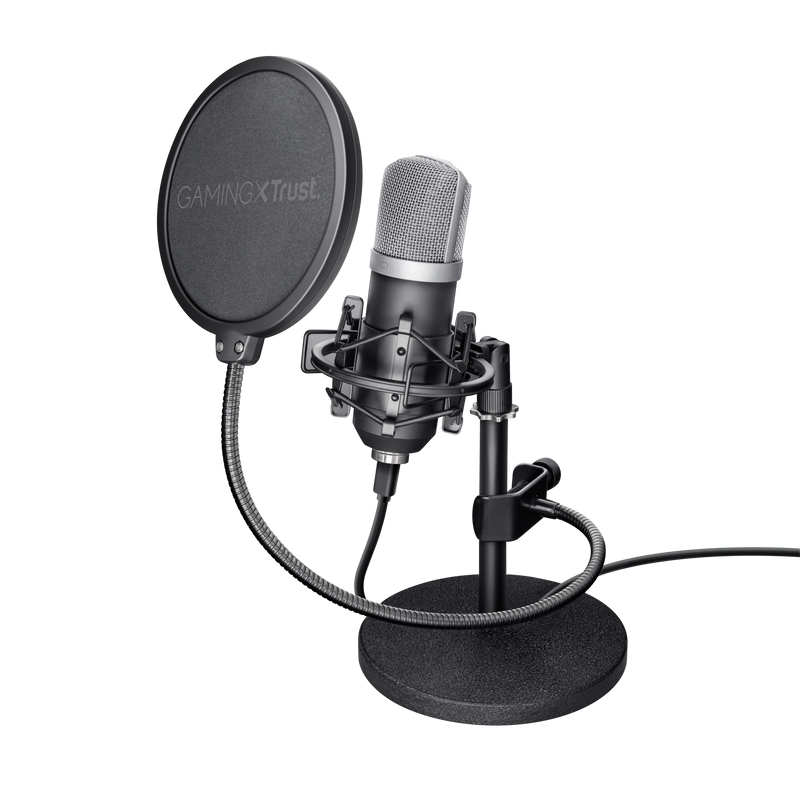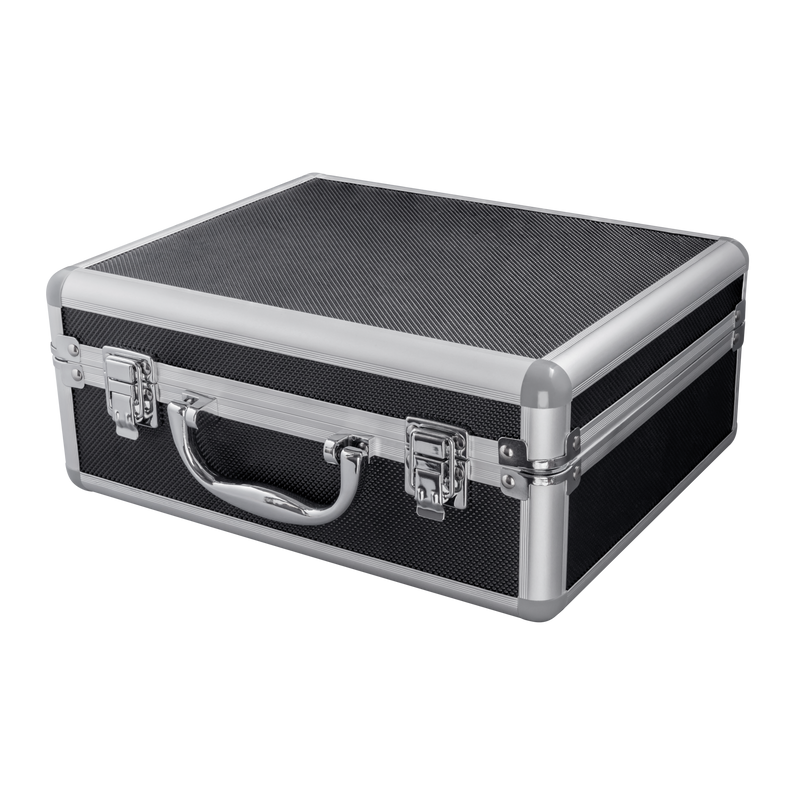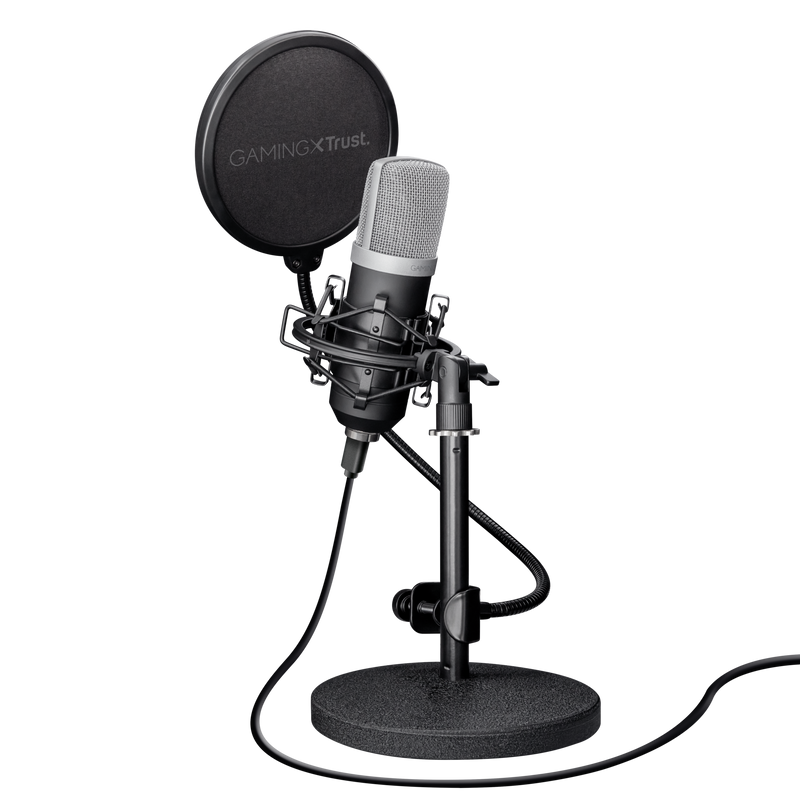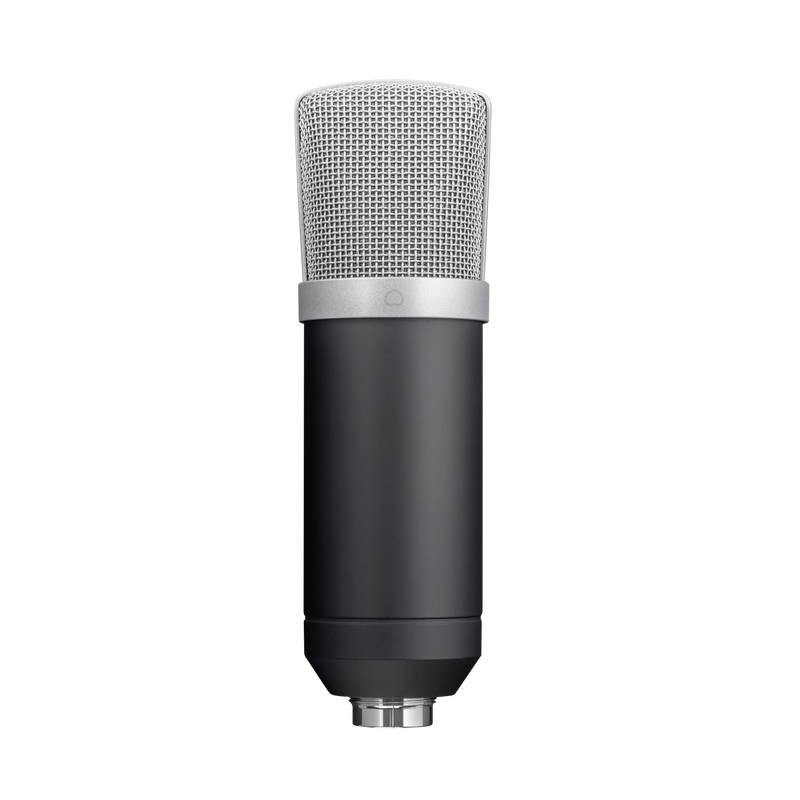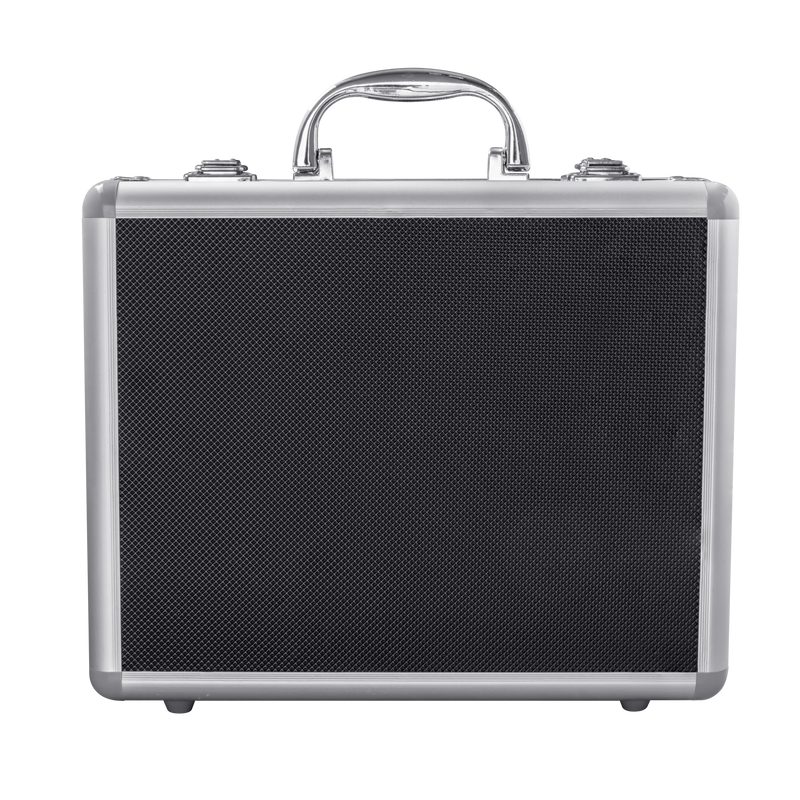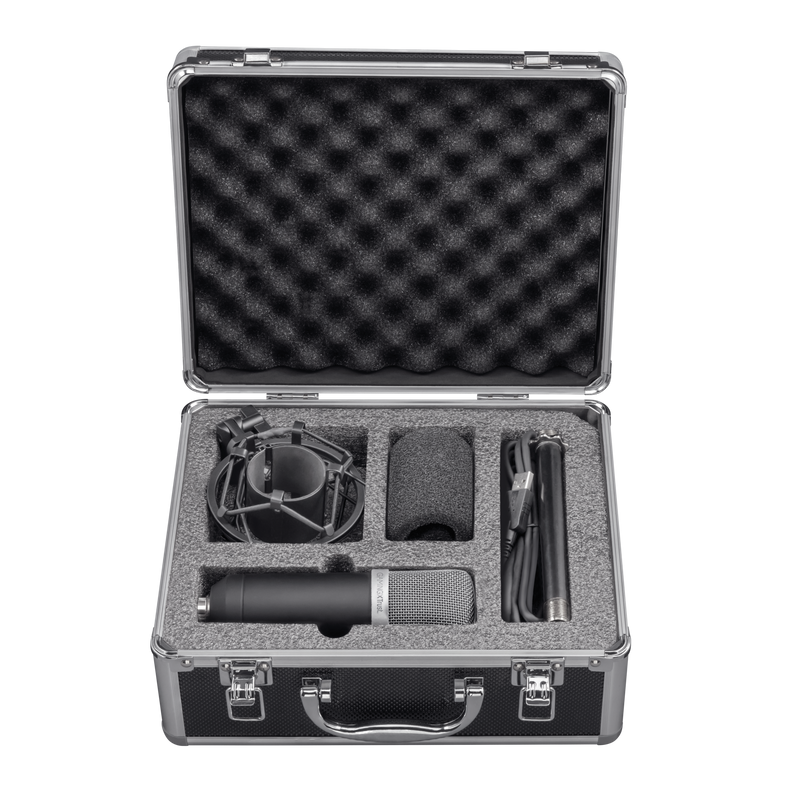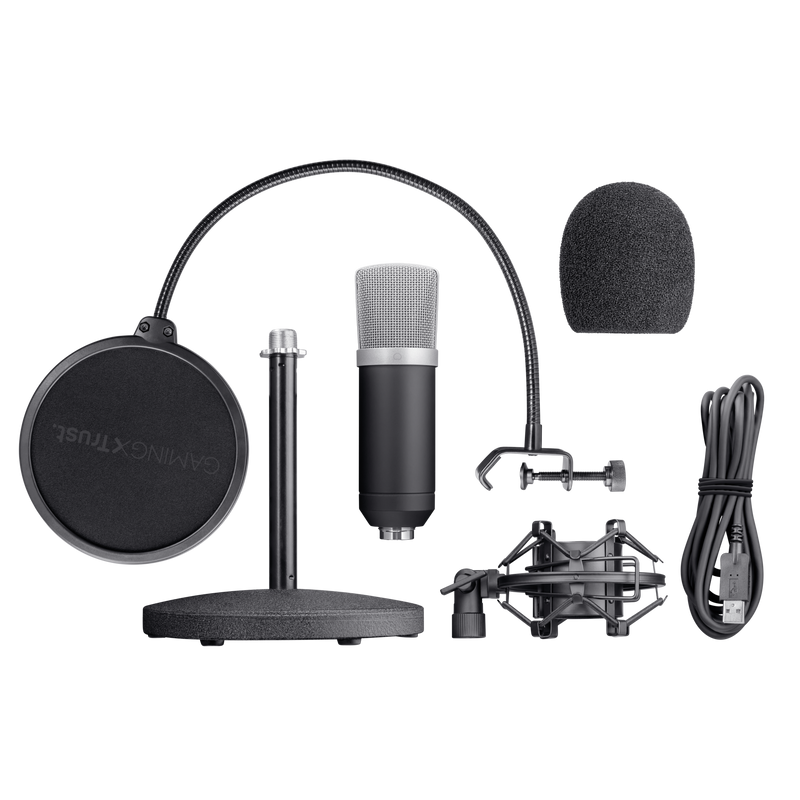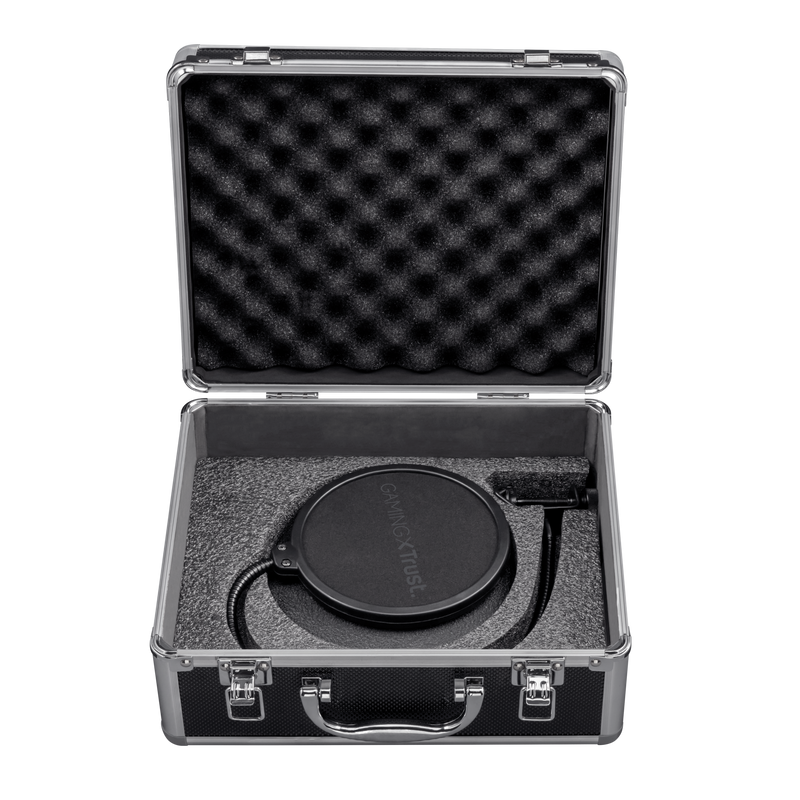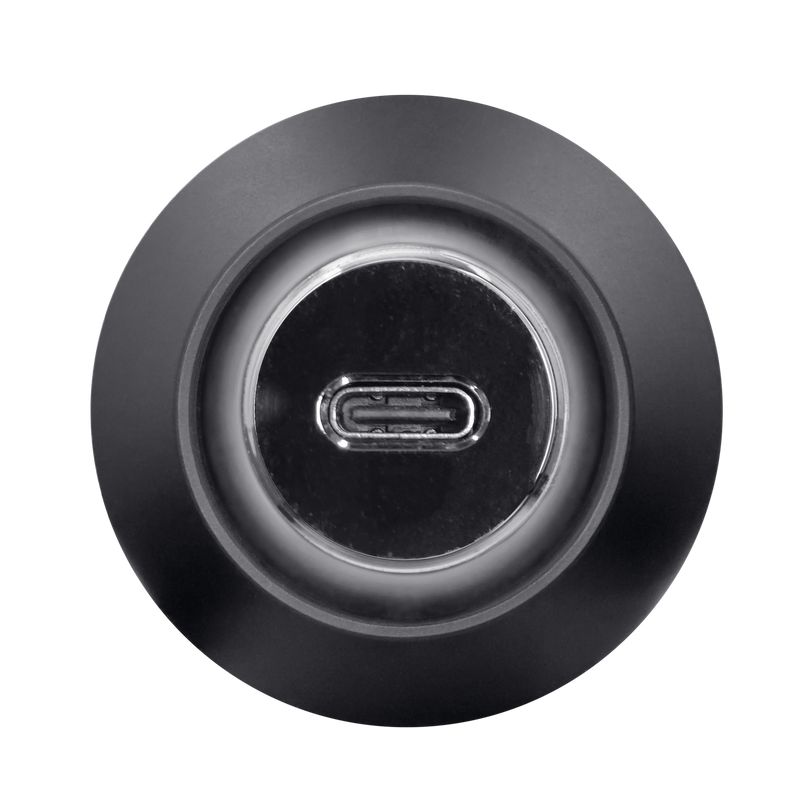GXT 252 Emita
Microfone de estúdio USB profissional com mala rígida, padrão de gravação cardioide de elevada precisão para transmissão de fluxos, podcasts, locuções e música acústica
The mic for makers
Whether you’re streaming, vlogging, podcasting, recording or more; you want it to sound professional. This professional USB studio microphone is perfect for all your sounds - let’s hear your voice!
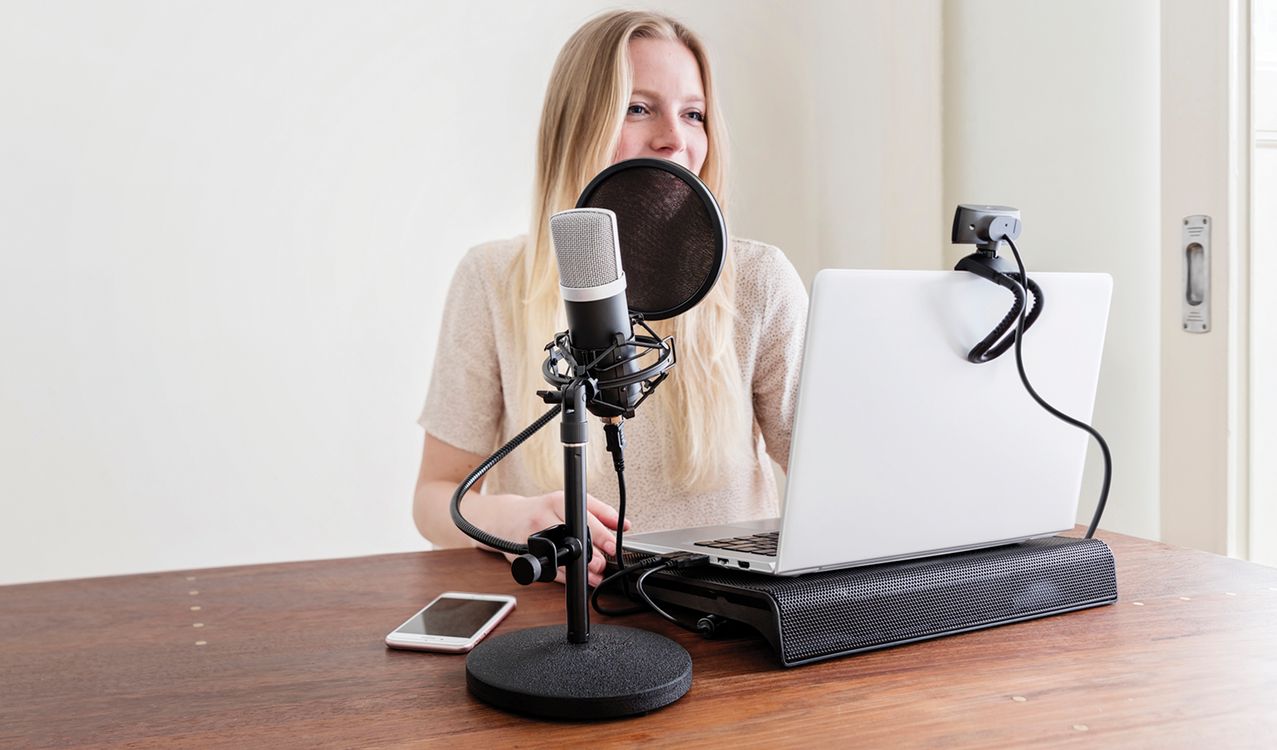
Recursos Principais
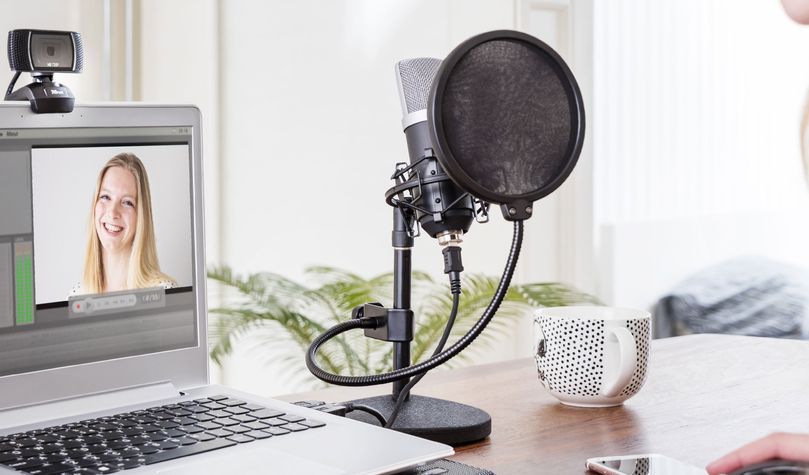
Keep it connected
Complete with a USB connection, the Emita is compatible with PC, PlayStation and Mac, meaning you can use it with all your favourite platforms. What’s more, the 2m long cable gives you all the flexibility you need to record your way.
Audio, enhanced
Specifically designed with a cardioid recording pattern, this microphone picks up sounds from the front of the microphone. This ensures that distracting noises around you aren’t heard, giving you the full, clear audio reproduction you’re looking for.


Stable and storable
With a heavy weight metal stand, the Emita makes sure your microphone is always in the perfect position for stable recording. Want to take it on the go? It comes with a durable aluminium flight case, perfect for recording on the road.
No place for pops
Get rid of all of those pesky plosives thanks to this microphone’s two included popfilters. Place on the microphone or in front, and get the best sound out of your recordings.
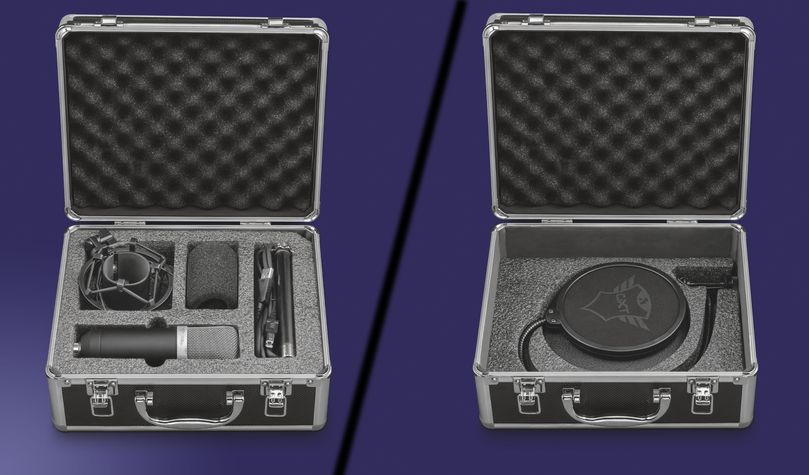
Especificações
Features
Size & Weight
General
Connectivity
Audio
Microphone
Mount
Compatibility
Informação extra
Emita USB Studio Microphone
Mala rígida
Microfone
Cabo USB
Proteções de vento
Suspensão elástica antivibrações
Suporte de secretária
Guia do utilizador
PC ou portátil com porta USB
Windows 7, 8 e 10
Download
Informações sobre conformidade
Versão 2.0 | Multilingue
Informações sobre conformidade
Declaração UE de conformidade (DoC)
Versão 1.0 | Multilingue
Declaração UE de conformidade (DoC)
Perguntas Frequentes (FAQ)
This microphone doesn't need a driver to function, it functions with the audio capability of the device it is connected to.
To install:
- Assemble the microphone and set it in your preferred position
- Connect the USB-plug to the USB-connection of the computer
- Check that the microphone is allowed to be used by applications in the Privacy Setttings
- Set the microphone as the default sound input and the speaker as the default sound output device on the computer.
- Check the microphone properties.
- The microphone is ready to use
Para isso, recomendamos o uso da função Dispositivo agregado.
Mais informações sobre isso: https://support.apple.com/en-us/HT202000
The USB cable is USB-A to USB-B. It is a commonly used, and readily available, cable for this kind of devices.
Se você estiver usando o Windows 10 e o microfone não estiver funcionando de maneira ideal (por exemplo, volume muito baixo), recomendamos que você verifique os drivers de áudio do Windows. Certifique-se de que os drivers de áudio (por exemplo, drivers Realtek) estejam atualizados baixando e instalando os drivers de áudio mais recentes através do site do fabricante do computador.
Infelizmente, não temos centros de serviço para consertar produtos.
Um produto com defeito deve ser substituído no ponto de venda durante o período de garantia.
Oferecemos uma garantia de 'devolução ao revendedor' para nossos produtos. Em caso de defeito, você pode devolver o produto ao revendedor com a descrição da falha, comprovante de compra e todos os acessórios. Durante o período de garantia, você receberá um produto de substituição do varejista, se disponível. Para todas as condições de garantia, você pode consultar: https://www.trust.com/support/warranty
Você pode usar o braço do microfone GXT 253 com os seguintes microfones Trust:
- 21753 - GXT 252 Emita Streaming Microphone
- 22400 - GXT 252+ Emita Plus Streaming Microphone
- 22614 - GXT 242 Lance Streaming Microphone
- 23465 - GXT 258 Fyru USB 4-in-1 Streaming Microphone e 24257 - GXT 258W Fyru USB 4-in-1 Streaming Microphone
Note:
- this microphone fits the arm, but can't be mounted directly onto the shock mount. However with the included (with the microphone arm) adapter you can screw this microphone onto the arm.
- the integrated USB-B cable from the 22563 - GXT 253 Microphone Arm is not supported by the FYRU Microphone. - 23510 - GXT 256 Exxo USB Streaming Microphone
- 23466 - GXT 244 Buzz USB Streaming Microphone
Se o seu MacBook tiver uma conexão USB (e não USB-C) apropriada, um microfone USB funcionará no Mac.
Depois de conectar o microfone, você seleciona o microfone nas configurações de áudio para instalá-lo.
The pick-up pattern of a microphone is the sensitivity to sound relative to the direction or angle from which the sound arrives, or how well the microphone "picks up" the sound from different directions. The most common types are: Cardioid, Omnidirectional, Unidirectional, Bidirectional.
CARDIOID
The most commonly used pattern is most sensitive at 0° (the front) and least sensitive at 180° (the back). This isolates it from unwanted ambient sound. You can use this for most recording applications. It is easy to get a good signal as the cardioid pattern blends out a bad sounding room, a noisy fan in the background, etc.
OMNIDIRECTIONAL
The omnidirectional microphone has equal sensitivity at all angles. This means it picks up sound evenly from all directions. Therefore, the microphone need not be aimed in a certain direction. It will be especially useful in good sounding rooms.
UNIDIRECTIONAL
Unidirectional microphones are most sensitive to sound arriving from directly in front (at 0°) and less sensitive in other directions. This makes unidirectional microphones effective at isolating the desired sound from both unwanted sound and ambient noise.
BIDIRECTIONAL
A bidirectional microphone (with figure-8 pattern) picks up the sound from in front of the microphone (at 0°) and from the rear (at 180°), but not the side (at 90° and 270°). It can be beneficial in situations where you do not want a signal coming from a 90° angle to bleed into the microphone.
Contate-Nos
Contate-Nos
Por favor, verifique nossas FAQs primeiro, é provável que você encontre a resposta lá.
Não encontrou a resposta nas perguntas frequentes? Preencha o formulário abaixo com o máximo de informações possível e um de nossos funcionários do suporte técnico responderá na primeira oportunidade. Nossas mensagens são respondidas na ordem em que são recebidas.
Depois de enviar o formulário, uma mensagem de confirmação será exibida com o seu número de referência. Esta confirmação foi enviada para o seu endereço de e-mail ao mesmo tempo. Se você não recebeu esta mensagem, verifique sua pasta de spam ou lixo eletrônico. Se você não encontrar a confirmação, envie o formulário novamente com o endereço de e-mail correto.
